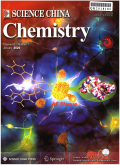- 钛学术文献服务平台 \
- 学术期刊 \
- 基础科学期刊 \
- 自然科学总论期刊 \
- 中国科学:化学(英文版)期刊 \
Charge storage mechanisms of cathode materials in rechargeable aluminum batteries
Charge storage mechanisms of cathode materials in rechargeable aluminum batteries
基本信息来源于合作网站,原文需代理用户跳转至来源网站获取
摘要:
Rechargeable aluminum batteries (RABs) have attracted great interest as one of the most promising candidates for large-scale energy storage because of their high volumetric capacity,low cost,high safety and the abundance of aluminum.However,compared with the aluminum anodes,the cathode materials face more problems including low specific capacity,relatively sluggish kinetics in most host structures and/or limited cycle lifespan,which pose the major challenge for RABs in further practical applications.During the past years,intensive efforts have been devoted to developing new cathode materials and/or designing engineered nanostructures to greatly improve RABs' electrochemical performances.In addition to nanotechnology-based electrode structure designs,the intrinsic chemical structures and charge storage mechanisms of cathode materials play an equally crucial role,if not more,in revolutionizing the battery performances.This review,here,focuses on current under-standings into the charge storage mechanisms of cathode materials in RABs from a chemical reaction point of view.First,the fundamental chemistry,charge storage mechanisms and design principles of RAB cathode materials are highlighted.Based on different ion charge carriers,the current cathode materials are classified into four groups,including Al3+-hosting,AlCl4-hosting,AlCl2+/AlCl2+-hosting,and Cl--hosting cathode materials.Next,the respective typical electrode structures,optimization stra-tegies,electrochemical performances and charge storage mechanisms are discussed in detail to establish their chemistry-structure-property relationships.This review on current understandings of the cathode charge storage mechanisms will lay the ground and hopefully set new directions into the rational design of high-performance cathode materials in RABs,and open up new opportunities for designing new electrolyte systems with respect to the targeted cathode systems.

推荐文章
Forest carbon storage in Guizhou Province based on field measurement dataset
Forest carbon storage
Field measurement dataset
Karst landform
Estimation of soil organic carbon storage and its fractions in a small karst watershed
Bare rock rate
Estimation method
soil organic carbon storage
Small watershed
Karst
Basic formation mechanisms of Lake Doroninskoye soda water, East Siberia, Russia
Saline lake
Sulfate reduction
Thermodynamic equilibrium
内容分析
关键词云
关键词热度
相关文献总数
(/次)
(/年)
文献信息
| 篇名 | Charge storage mechanisms of cathode materials in rechargeable aluminum batteries | ||
| 来源期刊 | 中国科学:化学(英文版) | 学科 | |
| 关键词 | |||
| 年,卷(期) | 2021,(11) | 所属期刊栏目 | REVIEWS |
| 研究方向 | 页码范围 | 1888-1907 | |
| 页数 | 20页 | 分类号 | |
| 字数 | 语种 | 英文 | |
| DOI | |||
五维指标
引文网络
引文网络
二级参考文献 (0)
共引文献 (0)
参考文献 (0)
节点文献
引证文献 (0)
同被引文献 (0)
二级引证文献 (0)
2021(0)
- 参考文献(0)
- 二级参考文献(0)
- 引证文献(0)
- 二级引证文献(0)
引文网络交叉学科
相关学者/机构
期刊影响力
中国科学:化学(英文版)
主办单位:
中国科学院
出版周期:
月刊
ISSN:
1674-7291
CN:
11-5839/O6
开本:
16开
出版地:
北京东黄城根北街16号
邮发代号:
创刊时间:
1950
语种:
eng
出版文献量(篇)
4060
总下载数(次)
0
总被引数(次)
11421
期刊文献
相关文献
推荐文献
- 期刊分类
- 期刊(年)
- 期刊(期)
- 期刊推荐
力学
化学
地球物理学
地质学
基础科学综合
大学学报
天文学
天文学、地球科学
数学
气象学
海洋学
物理学
生物学
生物科学
自然地理学和测绘学
自然科学总论
自然科学理论与方法
资源科学
非线性科学与系统科学
中国科学:化学(英文版)2022
中国科学:化学(英文版)2021
中国科学:化学(英文版)2020
中国科学:化学(英文版)2019
中国科学:化学(英文版)2018
中国科学:化学(英文版)2017
中国科学:化学(英文版)2016
中国科学:化学(英文版)2015
中国科学:化学(英文版)2014
中国科学:化学(英文版)2013
中国科学:化学(英文版)2012
中国科学:化学(英文版)2011
中国科学:化学(英文版)2010
中国科学:化学(英文版)2009
中国科学:化学(英文版)2008
中国科学:化学(英文版)2007
中国科学:化学(英文版)2006
中国科学:化学(英文版)2005
中国科学:化学(英文版)2004
中国科学:化学(英文版)2003
中国科学:化学(英文版)2002
中国科学:化学(英文版)2001
中国科学:化学(英文版)2000
中国科学:化学(英文版)2021年第7期
中国科学:化学(英文版)2021年第6期
中国科学:化学(英文版)2021年第5期
中国科学:化学(英文版)2021年第4期
中国科学:化学(英文版)2021年第3期
中国科学:化学(英文版)2021年第2期
中国科学:化学(英文版)2021年第12期
中国科学:化学(英文版)2021年第11期
中国科学:化学(英文版)2021年第1期

 免费查重
免费查重










